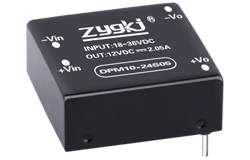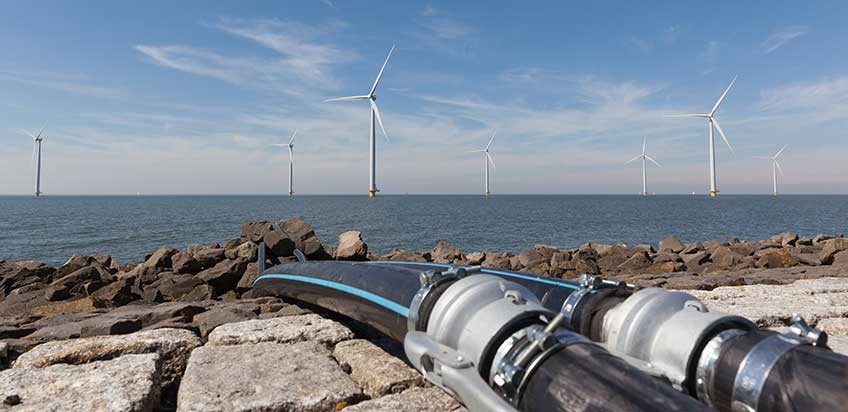소식
Design and Analysis of a Bidirectional DC-DC Converter for Energy Storage Systems
저자: ZYG 전원 모듈 Time: 2023-6-19
Energy storage systems (ESS) have been gaining popularity in recent years due to the increased need for renewable energy integration and grid stabilization. One of the key components of an ESS is the bidirectional DC-DC converter, which is responsible for converting the DC voltage of the battery to the appropriate voltage level for the load or grid, and vice versa. In this article, we will discuss the design and analysis of a bidirectional DC-DC converter for energy storage systems.
Design Considerations:
The design of a bidirectional DC-DC converter for ESS involves several considerations. Some of the key design parameters are:
1. Power rating: The power rating of the converter should be chosen to match the power requirements of the load or grid.
2. Voltage rating: The voltage rating of the converter should be chosen to match the voltage level of the battery and the load or grid.
3. Efficiency: The converter should be designed to operate at high efficiency to minimize power losses.
4. Size and weight: The converter should be designed to be compact and lightweight to reduce the overall size and weight of the ESS.
5. Control scheme: The converter should be designed to operate under different control schemes, such as voltage or current control, depending on the application.
6. Protection features: The converter should be designed with protection features to prevent damage from over-voltage, over-current, or over-temperature conditions.
Design of the Bidirectional DC-DC Converter:
The bidirectional DC-DC converter consists of two stages: the boost stage and the buck stage. The boost stage is responsible for stepping up the voltage of the battery to the desired voltage level for the load or grid, while the buck stage is responsible for stepping down the voltage from the load or grid to the battery voltage level. The overall operation of the converter is controlled by a digital signal processor (DSP) which implements a pulse-width modulation (PWM) algorithm.
The boost stage consists of a boost inductor, a boost switch, and a diode. During the boost mode, the boost switch is turned on, and the inductor stores energy from the battery. When the switch is turned off, the energy stored in the inductor is transferred to the load or grid through the diode. The output voltage of the boost stage is given by:
Vout = Vin x (1 + D)
where Vin is the input voltage from the battery, D is the duty cycle of the PWM signal, and Vout is the output voltage.
The buck stage consists of a buck inductor, a buck switch, and a diode. During the buck mode, the buck switch is turned on, and the inductor stores energy from the load or grid. When the switch is turned off, the energy stored in the inductor is transferred back to the battery through the diode. The output voltage of the buck stage is given by:
Vout = Vin x (1 – D)
where Vin is the input voltage from the load or grid, D is the duty cycle of the PWM signal, and Vout is the output voltage.

Simulation and Analysis:
To evaluate the performance of the bidirectional DC-DC converter, we conducted simulations using MATLAB Simulink. The converter was designed to operate at a power rating of 5 kW and a voltage rating of 400 V. The efficiency of the converter was evaluated under different operating conditions, such as varying load and battery voltages.
The simulation results showed that the converter achieved an efficiency of over 95% under most operating conditions. The converter was also found to be stable under different control schemes, such as voltage and current control. Furthermore, the converter was found to be robust against over-voltage, over-current, and over-temperature conditions due to the implemented protection features.
Conclusion:
In this article, we discussed the design and analysis of a bidirectional DC-DC converter for energy storage systems. The converter was designed to operate at a power rating of 5 kW and a voltage rating of 400 V. The simulation results showed that the converter achieved high efficiency and was stable under different operating conditions. The implemented protection features also ensured robust operation of the converter. The designed bidirectional DC-DC converter can be used in various energy storage applications, such as renewable energy integration and grid stabilization.
이전의: AC to DC Converter Module – 12V Output
다음: 120V AC to 12V DC Converter: Transforming Voltage for Efficient Power Supply
관련 정보
-
2023-5-7
Designing an AC-DC Converter Circuit
AC-DC converter circuits are essential components in many electronic devices such as power supplies and battery chargers. These circuits allow the conversion of AC power from the electrical grid to DC power that can be used to power electronic devices. In this article, we will discuss the design of an AC-DC converter circuit. The first step in designing an AC-DC converter circuit is to determine the input voltage and the desired output voltage. Once these values are known, the next step is to choose the appropriate transformer and rectifier components. The transformer is used to step down the input voltage to a level that is suitable for the rectifier circuit. The rectifier circuit is responsible for converting the AC voltage...
세부 정보보기 -
2023-6-13
Revolutionizing Energy Storage: The Bidirectional Converter Technology Explained
The world today is facing an energy crisis like never before. With the growing demand for electricity, coupled with the rising costs of energy, it has become necessary to explore new ways of storing and utilizing energy. One technology that has emerged as a game-changer in this field is the bidirectional converter. The bidirectional converter is an electronic device that is capable of converting direct current (DC) to alternating current (AC) and vice versa. This technology has been used in various applications such as electric vehicles, renewable energy systems, and energy storage systems. The primary benefit of bidirectional converters is their ability to transfer energy between two sources. This means that the converter can take power from a battery or...
세부 정보보기 -
2023-7-16
China Industrial AC-DC Converter: Powering Industrial Systems with Efficiency and Reliability
Introduction: In today's industrial landscape, the demand for efficient and reliable power supply systems is growing at an exponential rate. Industrial systems require a steady and uninterrupted power source to operate smoothly, and the AC-DC converter plays a crucial role in providing stable power to these systems. This article explores the significance of the industrial AC-DC converter and its contribution to powering industrial systems with efficiency and reliability. Understanding the AC-DC Converter: An AC-DC converter, also known as a rectifier, is an electronic device that converts alternating current (AC) power into direct current (DC) power. In industrial settings, where most equipment and machinery operate on DC power, AC-DC converters are indispensable. These converters play a vital role in converting the...
세부 정보보기 -
2023-5-14
12V 15A AC to DC Converter – Efficient Power Conversion Solution
With the increasing demand for efficient power conversion solutions, the 12V 15A AC to DC converter has become a popular choice for many applications. This device converts AC power into DC power, making it suitable for numerous industries, including automotive, marine, and telecommunications. One of the main advantages of using a 12V 15A AC to DC converter is its high efficiency. This device uses advanced technology to reduce power loss during conversion, resulting in lower energy consumption and increased cost savings. Additionally, the converter\'s compact design makes it easy to install and operate in tight spaces, making it a popular option for space-constrained applications. Another advantage of using a 12V 15A AC to DC converter is its versatility. This device...
세부 정보보기 -
2023-6-3
ZP Series AC DC Converter: Efficient and Reliable Power Conversion Solution
The ZP series AC DC converter is a power conversion solution that combines efficiency and reliability to provide seamless power conversion for various applications. This series is designed to convert AC power into DC power with high efficiency and low power loss, making it an ideal choice for a wide range of applications. Efficiency One of the key features of the ZP series AC DC converter is its high efficiency. This series is designed to operate at high efficiency levels, which means that it can convert large amounts of power with minimal losses. This makes it an ideal choice for applications that require high power conversion efficiency, such as industrial automation, telecommunications, and medical equipment. Reliability Another key feature of...
세부 정보보기 -
2023-7-12
Exploring the Advantages and Applications of Bidirectional DC-DC Converters
Introduction: Bidirectional DC-DC converters are a vital component in modern power systems as they enable power flow in both directions, allowing the transfer of energy between different voltage domains. These converters have gained significant attention due to their numerous advantages and wide range of applications. In this article, we will explore the advantages of bidirectional DC-DC converters and discuss their applications in various fields. Advantages of Bidirectional DC-DC Converters: 1. Power Flow Control: Bidirectional DC-DC converters provide the flexibility to control the power flow between two voltage domains. This feature is particularly useful in energy storage systems, where power needs to be efficiently transferred between the storage device and the load. 2. Energy Efficiency: These converters are highly efficient as...
세부 정보보기


















